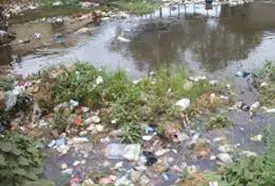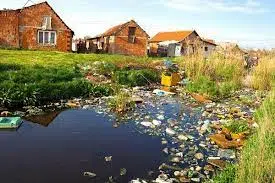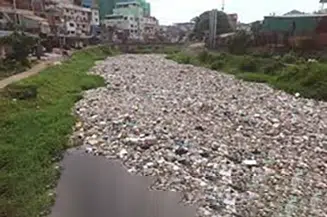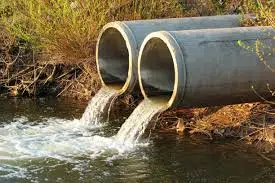Ozonator
An ozonator, also known as an ozone generator, is a device used to produce ozone gas (O3). Ozone is a powerful oxidizing agent and disinfectant that can be used to remove bacterial contamination from water. The process of ozone disinfection works through several steps:
- Ozone Generation: The ozonator uses either corona discharge or ultraviolet (UV) light technology to generate ozone gas. In corona discharge, electrical discharges pass through oxygen molecules, splitting them into individual oxygen atoms. These atoms then combine with other oxygen molecules to form ozone. In UV light technology, ultraviolet radiation breaks oxygen molecules apart, creating ozone.
- Injection: The ozone gas is injected into the water that needs to be treated. This can be done through a diffuser or contact chamber where the ozone is mixed with the water. Disinfection: Ozone acts as a powerful oxidizing agent and disinfectant. When it comes into contact with bacteria, viruses, and other microorganisms in the water, ozone damages their cellular structure and inhibits their ability to grow and reproduce. This process effectively kills or inactivates the microorganisms present in the water.
- Decomposition: Ozone is highly reactive and has a short life span in water. After disinfection, any remaining ozone in the water quickly decomposes back into oxygen without leaving any harmful residues or by-products.
Water Pollution
Water pollution refers to the contamination or degradation of water bodies, such as rivers, lakes, oceans, and groundwater, due to the introduction of harmful substances or pollutants. It occurs when pollutants, including chemicals, industrial waste, sewage, agricultural runoff, oil spills, and various other contaminants, are released into water sources, thereby compromising their quality and making them unfit for their intended uses.
These pollutants can alter the physical, chemical, and biological properties of water, resulting in negative impacts on aquatic ecosystems, human health, and the environment as a whole. Water pollution can occur through direct discharges into water bodies, as well as through runoff from land, atmospheric deposition, and groundwater contamination.
The effects of water pollution are far-reaching and can include the destruction of aquatic habitats, depletion of oxygen levels, harm to aquatic organisms, spread of waterborne diseases, degradation of water quality, loss of biodiversity, disruption of the food chain, and economic consequences. Water pollution poses a significant threat to both the natural environment and human societies, necessitating measures to prevent, control, and mitigate pollution through improved waste management practices, regulations, and public awareness.




Water Pollution Effects Due to Sewage Mixing in Water
Mixing of sewage with water bodies has numerous detrimental effects, leading to severe water pollution. Sewage contains a range of harmful substances, including pathogens, nutrients, organic matter, and chemicals. When sewage enters water bodies such as rivers, lakes, or oceans, it results in the following effects:
Firstly, water contamination occurs as pollutants from sewage contaminate the water. Pathogens present in sewage, such as bacteria and viruses, pose a significant risk to human health, causing waterborne diseases like cholera, dysentery, and gastroenteritis.
Secondly, sewage pollution leads to the depletion of oxygen in water bodies. The organic matter present in sewage decomposes, consuming dissolved oxygen and creating oxygen-depleted zones that harm aquatic life. Fish and other organisms may die due to oxygen depletion or the toxicity of pollutants.
Thirdly, the excessive nutrients, primarily nitrogen and phosphorus, present in sewage cause eutrophication. This leads to the overgrowth of algae and aquatic plants, blocking sunlight and disrupting the natural balance of ecosystems. It results in degraded water quality, reduced biodiversity, and the formation of harmful algal blooms.
Furthermore, sewage pollution creates aesthetic issues with foul odors like bad smell in water and unsightly appearances in affected water bodies. This negatively impacts tourism, recreational activities, and the overall well-being of local communities.
Lastly, the economic impacts of sewage pollution are significant. The costs associated with treating polluted water, healthcare expenses due to waterborne diseases, and the loss of income from tourism and recreational sectors all burden local economies.
To mitigate sewage pollution, it is crucial to invest in wastewater treatment infrastructure, implement proper sanitation practices, and raise public awareness about the importance of sewage management and water conservation.
The use of an ozonator for water disinfection offers several advantages. Ozone is highly effective in killing a wide range of microorganisms, including bacteria and viruses. It is more potent than traditional disinfectants like chlorine and does not produce harmful disinfection by-products. Ozone also has a relatively short half-life, which means it does not persist in the water for an extended period, making it a safe and environmentally friendly disinfection option.
However, it’s important to note that ozonators may require proper monitoring and control to ensure effective disinfection. The dosage of ozone and contact time with the water should be optimized to achieve the desired level of microbial inactivation. Additionally, ozonators typically need adequate pre-treatment to remove any solids or organic matter that may interfere with the ozone disinfection process.
Hard water refers to water that contains high levels of dissolved minerals, particularly calcium and magnesium ions. These minerals are naturally present in the Earth’s crust and can dissolve into groundwater as it passes through rocks and soil. As a result, the water becomes “hard” and can have several effects on both the environment and human activities.
